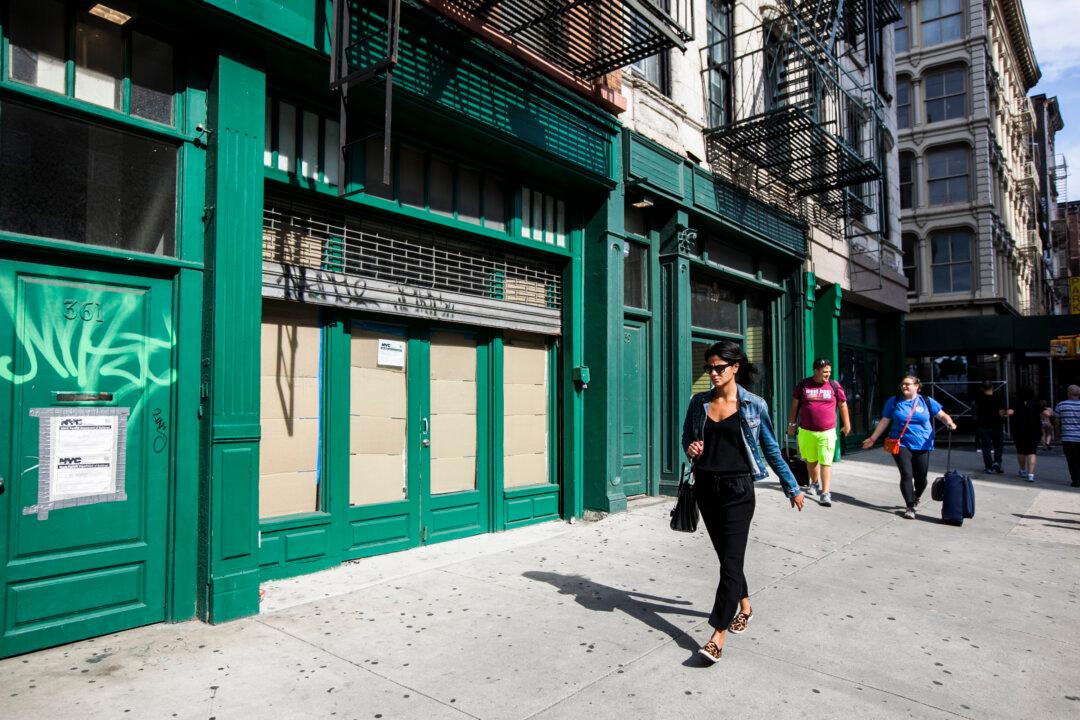NEW YORK—Shuttered storefronts, with their dirty glass and aura of abandonment, are a blight to vibrant city streets. They appear in a New York minute and age ungracefully over months, or sometimes years.
Dramatic rent hikes are forcing many small-business owners out of the market.
Da'Vinci Shoes on West Eighth Street is closing at the end of this month, after the landlord more than doubled the rent, according to a staff member.





